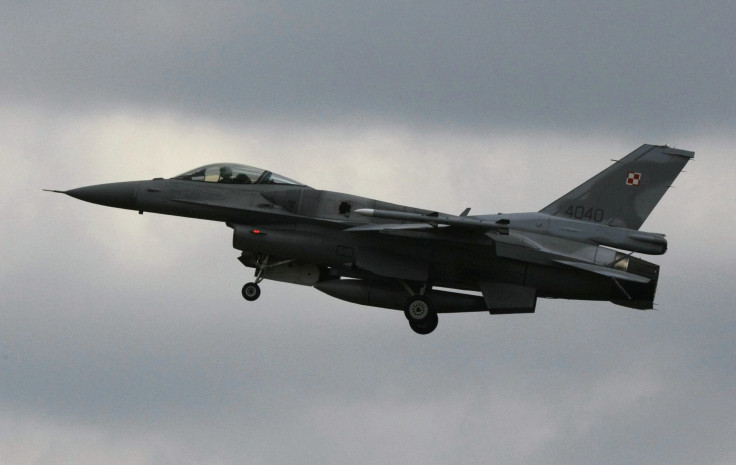Ukraine: US Sends Fighter Jets to Poland, Baltic States in Response to Russian War Games

The U.S. is sending 12 F-16 fighter jets to Poland on the Polish government's request after Russian troops in Kaliningrad and the Baltic Sea engaged in a series of live-fire exercises. The planes are set to arrive Monday.
The U.S. also agreed to send four F-15 jets to Lithuania. Lithuania’s defense ministry said it was in response to “Russian aggression in Ukraine and increased military activity in Kaliningrad.” Kaliningrad is a Russian exclave oblast (province) that borders both Lithuania and Poland, which means it stands on its own outside Russia’s border.
The move comes after Poland and Lithuania each requested a NATO consultation to discuss the Russian aggression according to Article 4 in the NATO charter, which stipulates that “the Parties will consult together whenever, in the opinion of any of them, the territorial integrity, political independence or security of any of the Parties is threatened.”
Russian President Vladimir Putin ordered live-fire tactical exercises in the region to check the combat readiness of the troops there. According to Polish General Marek Dukaczewski, Russia did not warn neighboring countries about the exercise or invite international observers, both standard practices before launching combat-readiness drills.
Poland has 48 F-16 fighters but the Baltic states -- Estonia, Latvia and Lithuania -- look to NATO for serious defense capabilities. There is a U.S. Air Force presence in the Baltic states because of NATO air-patrol responsibilities, which rotate in four-month intervals between member states. The U.S. is responsible for Baltic patrols until the end of April.
The U.S. currently has 10 or so airmen in Poland that support military training. Now, 300 men will head to Poland to support the 12 F-16s. Fellow NATO member state Turkey has twice scrambled jets last week in response to Russian planes found flying along its Black Sea coast.
Like Ukraine, the Baltic states share a long and complicated history with Russia. All three were annexed by the Soviet Union in 1940 and gained independence in 1991 shortly before the fall of the Soviet Union.
They too find themselves having to choose between leaning toward the West and Russia. The only gas supplier to the Baltic states is Russia, and officials say that Moscow-based Gazprom charges Baltic states more than it does anyone else.
However, Lithuanian President Dalia Grybauskaite has said Russia is dangerous these days, and she believes Russia won’t stop at the Crimea.
“With smaller countries, it’s either total obedience or you’re an enemy,” Grybauskaite said, adding that “there is no desire to recognize others as equals, but rather various means are used to pressure other countries, economically and politically.”
Meanwhile, Russian Defense Minister Sergei Shoigu claimed the sudden inspection of 150,000 or so troops across western Russia were not related to the events in the Ukraine, even though some were undertaken just beyond the Ukrainian border.
The decision to send more U.S. forces to the Baltic states is so far the most forward move made by the U.S., which has also considered the idea of economic sanctions against its former Cold War rival, in relation to the Ukraine crisis.
© Copyright IBTimes 2024. All rights reserved.












